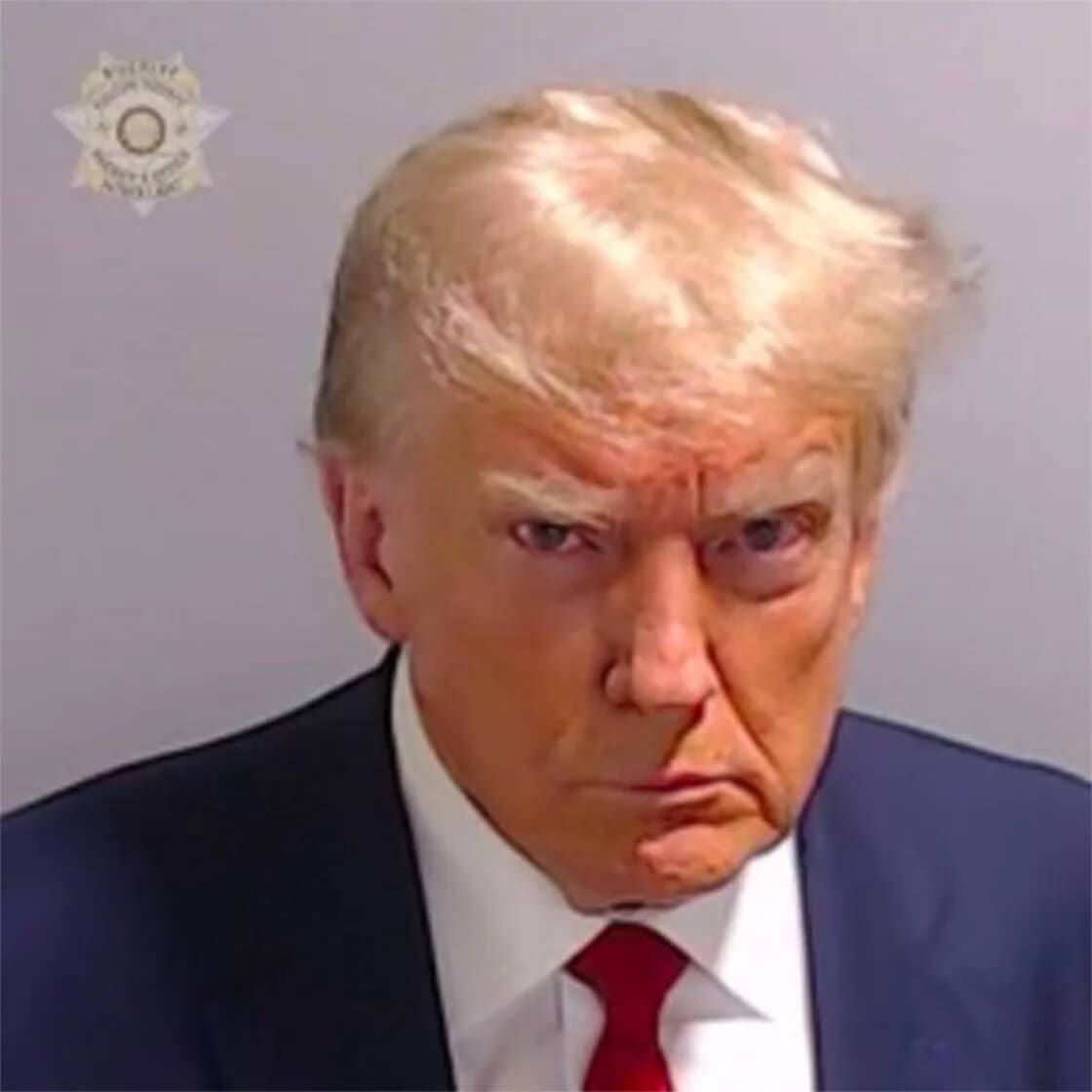Last updated on January 24th, 2025 at 09:57 pm

One of the most anticipated events in the summer of 2023 was former President Donald Trump’s mug shot.
The Fulton County Sheriff’s office released Trump’s mug shot on Aug. 24, 2023, a little more than one week after a grand jury in Georgia indicted the former president and 18 associates for alleged attempts to overturn the results of the 2020 election.
Trump’s photo instantly generated a significant amount of media coverage and attracted public attention. Trump’s election campaign is now marketing the photo as a way to raise money. It’s also been used to ridicule and criticize him.
In the mug shot, Trump wears one vof his classic dark suits with a red tie and a familiar, petulant scowl, with his brow furrowed and mouth turned down.
Save for the gold seal of the Fulton County Sheriff’s Office, there is nothing particularly noteworthy or interesting about the image.
But Trump’s mug shot’s ultimate importance is yet to be realized.
I have been interested in and researching mug shots and other forms of identification for more than 20 years. I did my Ph.D. thesis on the uses of photography in criminal identification and in 2009 wrote my first book,
“Capturing the Criminal Image: From Mug Shot to Surveillance Society,” on the same topic.
It will likely be at least a decade or two before Trump’s mug shot’s significance truly registers with people. For now, it is a form of entertainment – a salacious piece of visual culture that Trump’s supporters and opponents have been waiting for and are now putting to use.
But as a historical artifact, the Trump mug shot will be truly unique – it will represent the first time a former president had a public, photographic record of criminal charges.
Long after the various trials come to conclusion, the mug shot will serve as a reminder of a particularly troubling time in American history.
From the 1840s to now
French police were the first to produce mug shots using a daguerreotype camera as early as the 1840s.
In order to avoid increased penalties for repeat offenses, criminals could try to change their appearance or give different names if arrested.
The mug shot was a way to combat this deception. Other police departments around the world quickly recognized mug shots’ useful nature.
By the end of the 19th century, police departments amassed photographs of criminals into bound collections called rogues galleries, many of which housed thousands of criminals’ images.
Given its use over more than 150 years, the mug shot has an established association with criminality or, at the very least, suspicion of criminality.
While a mug shot does not mean the person pictured has committed a crime, it does mean that police had reason to bring a person into custody and formally book them.
The typically stern faces of those subject to the camera, as well as the inclusion of accouterments such as identification or prisoner numbers or a height chart in the background, add to this association of criminality.
Variations of mug shots
Trump’s mug shot, along with that of his attorney Rudy Giuliani, closely follows the standard mug shot format from the 19th century – with people facing the camera head on, often with a grimace or a solemn face. By contrast, the mug shots of former Trump associates David Shafer and Jenna Ellis look more like family photos, with their wide eyes and toothy grins.
Shafer’s and Ellis’ mug shots follow in the recent practice of others – typically celebrities or politicians – who have pushed back against traditional ideas of how mug shots should look.
In 2014, musician Justin Bieber was arrested for drag-racing in Miami Beach and bore an innocent looking, boyish smile in his mug shot.
Former Texas Gov. Rick Perry was indicted for abuse of power in 2014 and gave a full-faced, closed-mouth smile for his mug shot, which looked fit for a political campaign advertisement.
Socialite Paris Hilton also struck highly stylized poses for the camera during all three times she took mug shots following her arrests for drug possession and driving under the influence in the mid-2000s.
Mug shots influence culture
Mug shots primarily serve as an official police identification record.
But when mug shots are released publicly, they become part of a broader conversation about culture and society and can take on different meanings over time.
Former football player O.J. Simpson, who was charged with the death of his former wife and her boyfriend in 1994 – and of which he was later acquitted – offers one the most famous examples of how a mug shot can have an enduring legacy.
Both Time and Newsweek magazines published Simpson’s mug shot on their covers in June 1994.
But Time darkened Simpson’s skin tone, reflecting false, racist stereotypes about dark skin color and the connection to crime. It later apologized for doing so.
Now, along with being available for purchase as a poster, print or other commercial product, the Simpson mug shot serves as a case study in college courses on criminology and media and communication studies.
Mug shots tap into a cultural fascination with crime and criminal justice, so it is no surprise that mug shots find their way into popular culture – especially when the subjects are famous people.
The mug shots of mobster Al Capone and singer Frank Sinatra from the 1930s are still available on a wide range of commercial products, like shirts and hats.
The actress Jane Fonda famously raised her fist in a 1970 mug shot after she was arrested for drug smuggling. That photo provides evidence of her career as an antiwar and feminist activist. Her charges were ultimately dropped.
Trump’s mug shot and its legacy
Trump’s mug shot will likely continue to be used in a wide range of political, commercial and public contexts, in different ways and to different ends.
Some – including Trump’s legal team – have said that Trump does not need to have a mug shot. No mug shots were required or produced during his other three arrests in 2023.
The argument is that Trump is readily recognized by the police. But the Fulton County sheriff said that Trump would be treated the same as any other person the agency arrests.
I think that Trump’s mug shot is unlikely to sway the hardened views of his most ardent proponents and detractors. There has been a nearly endless stream of information across all forms of media about the former president for nearly a decade. A mug shot won’t make Trump’s supporters think he’s a criminal, but it might encourage future generations to come to that conclusion.
The article featured in this post is from The Conversation and republished here under a Creative Commons License. Read the original article.


